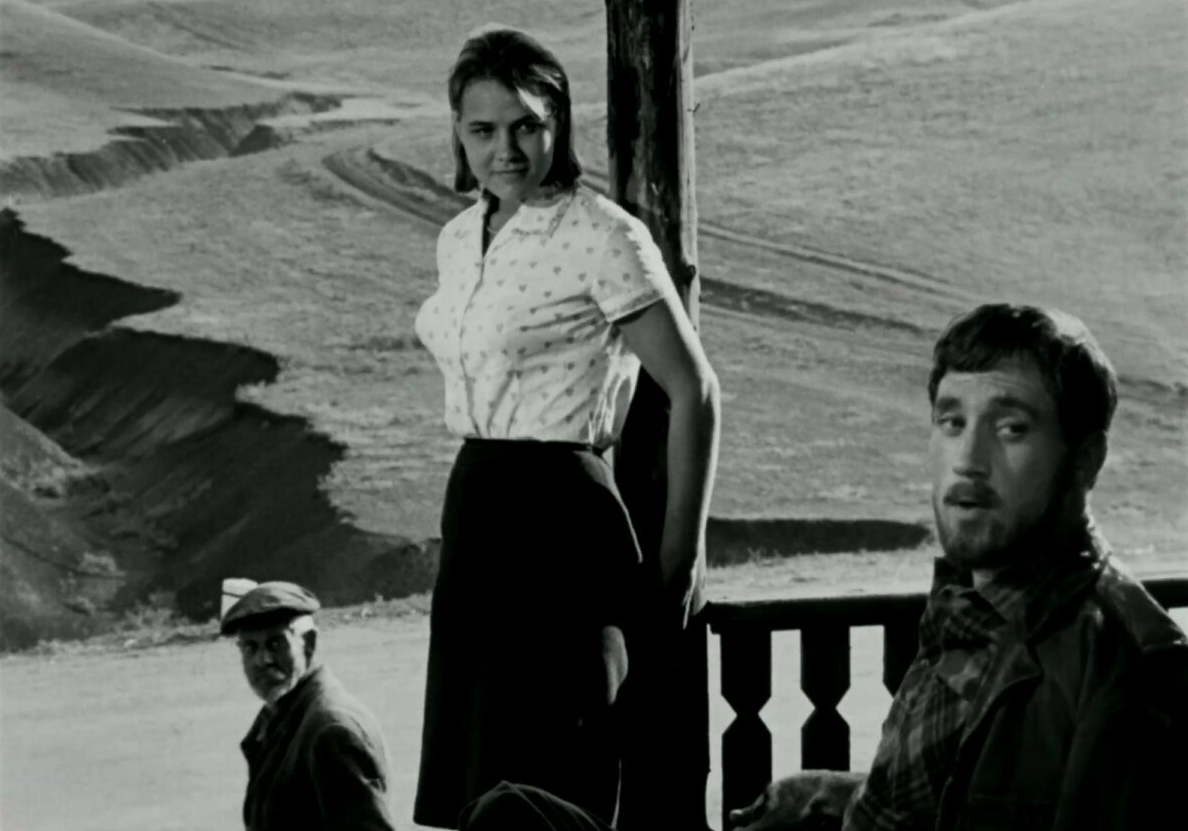
Valentina and Nadya love the same man; one is his wife, the other a fleeting encounter; neither knows of each other’s existence until a misunderstanding brings them together. A finely spun love triangle, in which the image of Maxim is crafted solely from the reminiscences of two infatuated women.
EN
“For Muratova, her first proper film was the feature Brief Encounters (1967) a love story told through parallel tracks: two women in love with the same man. The Russian bard, the young Vladimir Vysotsky plays the ‘gypsy-like’ geologist Maksim, and the young Nina Ruslanova takes up the role of his rural, young lover Nadia. Muratova starred as the main character Valentina, a disenchanted city official; she took the role only after the actress she chose proved unsuitable. Muratova’s incipient experimentalism was already evident in this film’s non-linear temporality, use of flashbacks and poetic cinematography. Asymmetrical close-ups and domestic décor were exposed to a mournful, ambivalent gaze, in which romantic and ideological idealisms were equally interrogated. It was a love triangle in which the earthy, bohemian man, object of desire, is envisioned only through the perspectives and memories of two women, never materialising in the film’s present. Neither doubles nor opposites, the two women, and their aspirations and longings, intermingle in the film’s woven tapestry of Soviet provincial life, a mix of vivacity and stagnation.”
Elena Gorfinkel1
“In Muratova’s film, the subjects emerge through their tactile interaction with the world of things surrounding them. People and objects create a sensual system of signs, in which spectacles of subjectivity and desire take place. Plants, dishes, instruments, clothes, bed linen, walls, furniture and telephones have an almost animate presence. Both women explore the world not only with their gaze, but also through the touch of their hands. When setting her clocks, Valia seems to be establishing a sensual connection to time.”
Isabel Jacobs2
“To understand the meaning of these final moments, it is useful to compare Getting to Know the Big Wide World with Brief Encounters (1967), Muratova’s first solo directorial effort. It, too, explores a love triangle; except that it consists of two women and one man. Quite conversely to Getting to Know the Big Wide World’s Kolya and Misha, Muratova is far more ambiguous as to which woman’s side we are supposed to be on. This ambivalence aside, the ending suggests the reunion of the couple that has been together for many years, the other younger woman (also played by Ruslanova, in her first role) willingly leaving to allow them to be together. Although their relationship has been far from easy, this finale seems hopeful that these two people who are terribly different (the woman needs constancy, the man is a wanderer) may find a way of reconciling themselves to one another because of, well, love.
If Muratova ends her first film on a chord of optimism for these two opposites, then it would seem incongruous for her to imagine that the same cannot be possible for Liuba and Misha: to maintain a state of grace in love.”
Veronika Ferdman3
- 1Elena Gorfinkel, “Kira Muratova’s Searing World,” Close-Up Film Centre, 2019.
- 2Isabel Jacobs, “The Impossibility of Love in Kira Muratova’s Brief Encounters (Korotkie Vstrechi, 1967),” East European Film Bulletin, 2019.
- 3Veronika Ferdman, “Getting to Know the Big Wide World,” LOLA, 2013.